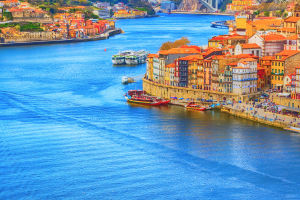Teide is the highest mountain in Spain and the Atlantic islands, as well as the third-largest volcano in the world. Located in Tenerife, Canary Islands, it is the most famous landmark of the region.
The volcano and its surroundings make up Teide National Park, covering 18,900 hectares, and was listed as a World Heritage Site on June 29, 2007.
During the European expansion, Mount Teide was considered the tallest mountain in the world due to its majestic elevation, as Spanish, Portuguese, and British sailors used it as a lighthouse for sailing south across the Atlantic.
Mount Teide stands at an elevation of 3,718 meters above sea level, making it the highest mountain in Spain and the Atlantic Ocean. The volcano's last eruption was in 1798.
However, volcano experts believe Mount Teide's current state is unstable, as there are many small active fumaroles emitting sulfur dioxide, hydrogen sulfide, and other gases from the top of the volcano. A 2009 study concluded that Teide is likely to erupt violently in the future.
Despite the potential for future eruptions, Mount Teide remains a famous tourist attraction and is considered the most famous natural heritage of the Canary Islands.
It attracts millions of people from all over the world to travel here every year, with Teide National Park being the most visited national park in the Canary Islands and Spain. In 2007, more than 3 million tourists visited the volcano, which is second only to Mount Fuji in Japan.
The unique ecological environment of Mount Teide and its surroundings also makes it an important source of water for the Canary Islands, providing a large amount of freshwater for Tenerife and surrounding areas.
The volcano is also rich in biodiversity, with many unique species of plants and animals adapted to the high-altitude environment and the volcanic rocky soil. These species have developed amazing adaptability and vitality to survive in such conditions.
In addition to its natural beauty and ecological significance, Mount Teide also has a rich cultural history and tradition.
Mount Teide has become a symbol of the Canary Islands and Spain, representing the natural and cultural heritage of the region. As such, it is an important place for scientific research and education.
To protect these valuable natural resources and ecosystems, Teide National Park has implemented a series of protection measures, including limiting the number and activities of tourists and restricting the development of roads and buildings. The park has also carried out a large number of research and scientific expeditions to understand and protect this important natural heritage.
Mount Teide is not only a famous landmark and tourist attraction but also a valuable natural and cultural heritage of the Canary Islands and Spain.
Despite its potential for future eruptions, Mount Teide's ecological environment and cultural significance make it an important place for scientific research, education, and preservation. It is essential that we continue to protect and cherish this unique natural and cultural treasure for generations to come.


